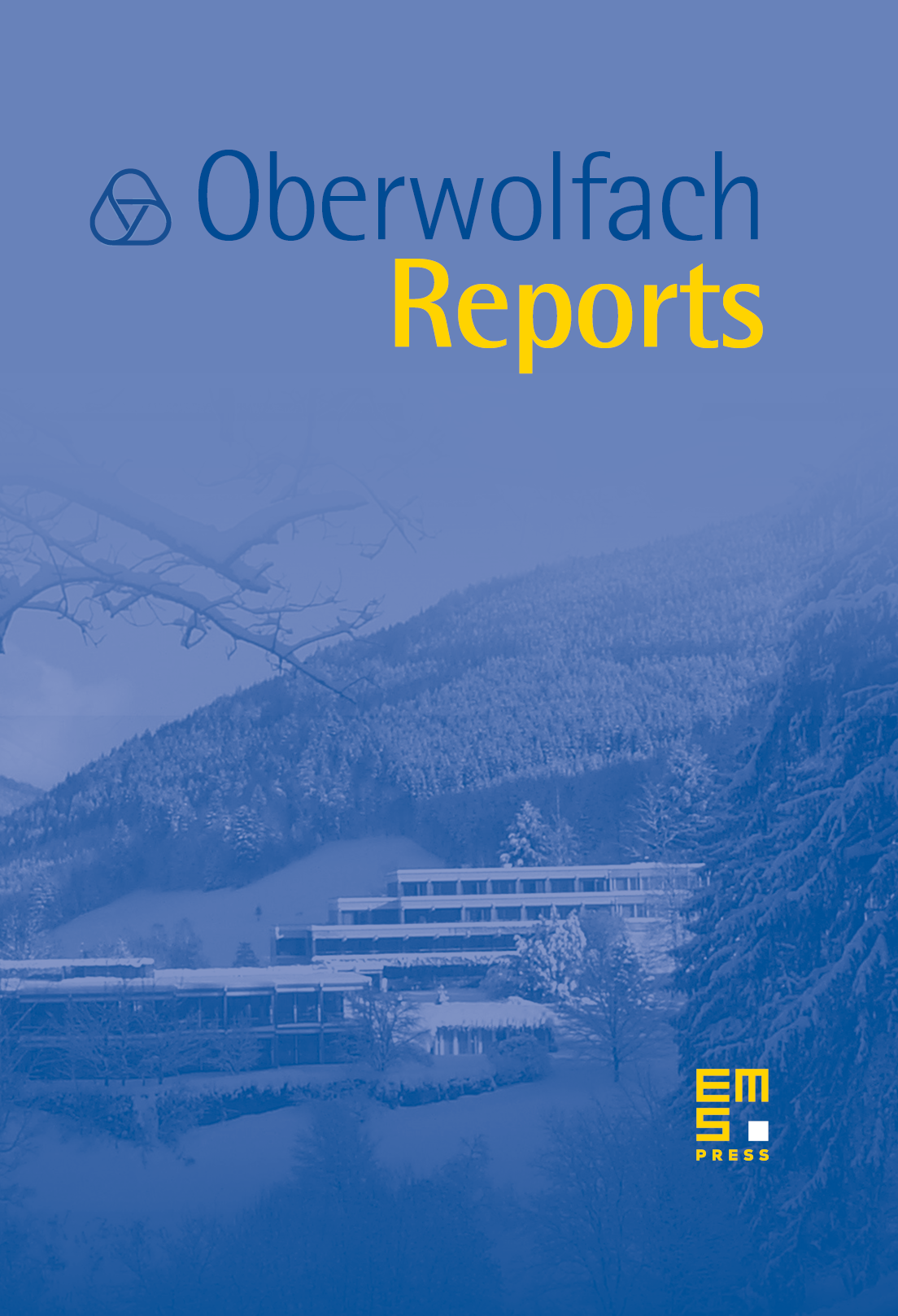Topologie
Cameron Gordon
University of Texas at Austin, USAWolfgang Lück
Universität Bonn, GermanyRobert Oliver
Université de Paris XIII, Villetaneuse, France

Abstract
This conference was the fifth in the series of topology conferences organized by Gordon, Lück, and Oliver, and the last in which Lück will be an organizer. This meeting, which currently takes place every second year, is one of the few regularly occurring conferences anywhere which allows researchers from a wide range of areas of topology to meet.
There were about 50 participants in this meeting, including researchers in many different areas of algebraic and geometric topology. This conference was partly funded by the European Commission, which made it possible to invite and support many more young participants – thesis students as well as recent postdocs – than is usually the case.
There were a total of 19 talks at the conference, covering areas such as -manifolds and knot theory, geometric group theory, algebraic - and -theory, and homotopy theory. Hence it is difficult to separate out themes which covered more than two or three talks. The following is a brief summary of some of the highlights.
Marc Lackenby's talk was about the “folk” conjecture in knot theory that crossing number is additive under connected sum. Clearly ; what one wants is an inequality in the other direction. Applying normal surface theory to a suitable handle decomposition of the complement of derived from a minimal crossing diagram, Lackenby shows that for some explicit universal positive constant , the inequality holds.
Nathalie Wahl talked about her ongoing joint work with Allen Hatcher on the stability of the homology of the mapping class group of certain -manifolds. Namely, she looked at those with summands of type and punctures, stabilizing with respect to increasing . The result is that the -th homology stabilizes when , which improves considerably the previous stability range.
Also on the subject of -manifolds was the talk by Walter Neumann, about his joint work with Jason Behrstock in which they give the quasi-isometry classification of the fundamental groups of graph-manifolds. The result is that for closed non-geometric graph-manifolds there is only one quasi-isometry class, whereas in the bounded case the classification corresponds to the classification of the dual graphs up to so-called bisimilarity (a concept which, interestingly, arises in computer science).
The talks by Thomas Schick and Bernhard Hanke dealt with manifolds with positive scalar curvature. Hanke described conditions under which a closed manifold with fixed point free -action can be shown to have a Riemannian metric with positive scalar curvature. Schick discussed some connections between the nonequivariant problem (existence of positive scalar curvature metrics without a group action) and the Novikov conjecture.
In a different direction, Jesper Grodal and Carles Broto described recent progress on -completed classifying spaces and related topics. Grodal described work which shows that, for a finite group and a prime dividing , the fundamental group of the geometric realization of the linking category is in many interesting cases isomorphic to again. The point here is that the category depends only on the -completed classifying space , and thus that the group can be “recovered” from this -completed space in certain favorable cases. Broto described a new class of spaces, classifying spaces of “-local compact groups,” which includes -completed classifying spaces of compact Lie groups and -compact groups, for which the spaces have many of the nice homotopy theoretic properties of -completed classifying spaces of compact Lie groups. Also, in a talk on a related topic, Natalia Castellana described recent work on connected covers of finite -spaces.
Geometric group theory was represented by the talks of Karen Vogtmann and Mike Davis. Vogtmann talked about joint work with Jim Conant about certain classes defined by Morita in the unstable rational homology of the outer automorphism group of a free group. In particular Conant and Vogtmann reinterpret and generalize these Morita classes, associating a class with every odd-valent graph. Davis talked about his joint work with Dymara, Januszkiewicz and Okun, giving a description of the cohomology module of a Coxeter group with coefficients in the group ring .
Arthur Bartels, in his talk, described the recent proof of the -theoretic Farrell–Jones conjecture with arbitrary coefficients for subgroups of finite products of word-hyperbolic groups. (Notice that such groups can be very wild.) This has many consequences. It implies the Bass Conjecture, the Kaplansky Conjecture and Moody's induction conjecture for such groups. If is such a group and torsionfree this says that the Whitehead group of and the projective class group of both vanish. Another consequence is that the -theoretic Farrell–Jones Conjecture with coefficients is true for the examples of groups for which its non-commutative companion, the Baum–Connes Conjecture with coefficients, is known to be false by a result of Higson, Lafforgue, and Skandalis.
Cite this article
Cameron Gordon, Wolfgang Lück, Robert Oliver, Topologie. Oberwolfach Rep. 3 (2006), no. 4, pp. 2579–2630
DOI 10.4171/OWR/2006/43